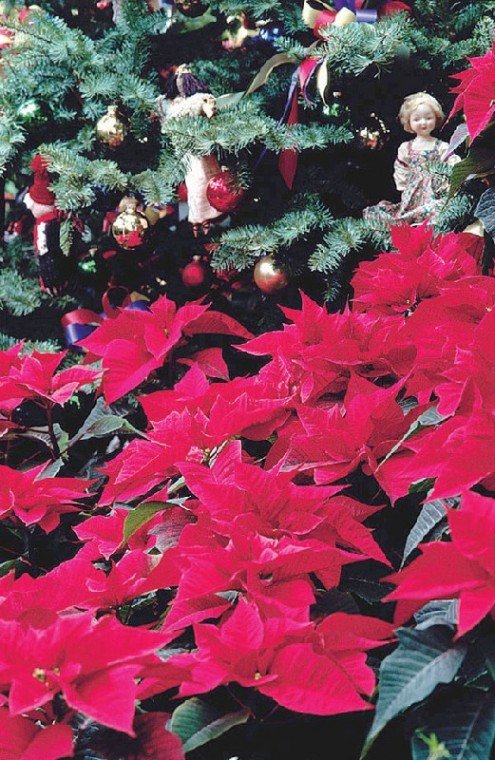Holiday songs exhort us to keep Christmas alive in our hearts,
but what about on our front doorsteps? Plants tied to the
season
– poinsettia, cyclamen and living Christmas trees – don’t get up
and leave on their own when the decorations start to go back into
their boxes, but keep them in
”
storage
”
all year long and they’ll look just as good for next year’s
season.
Holiday songs exhort us to keep Christmas alive in our hearts, but what about on our front doorsteps? Plants tied to the season – poinsettia, cyclamen and living Christmas trees – don’t get up and leave on their own when the decorations start to go back into their boxes, but keep them in “storage” all year long and they’ll look just as good for next year’s season.
Proper care and watering are essential for winter plants, many popular varieties of which are not hardy in any sense of the word.
“I happen to have had a flower shop in Indiana, and I have had to deliver poinsettias at 25 degrees below zero,” said Fran Grabau, a master gardener for the Santa Clara County Master Gardeners Hotline. “And let me tell you, they are the most temperamental little things. They’re just very fragile.”
Most poinsettias sold in the United States are hothouse grown, timed to bloom through December by manipulating their exposure to light in shadowed greenhouses. They also tend to be placed in very loosely packed soil, which not only aids water flow (to keep down root rot), but contributes to the plant’s susceptible nature. Many dry out easily, so Grabau suggested checking the plant daily and keeping it inside until spring. Ted Uchida, owner of Zen Flowers in Gilroy, also recommended keeping poinsettia in a medium to brightly lit area, though not one overloaded with artificial light through the night.
Another popular winter bud, Cyclamen is generally hothouse grown, too, and Uchida advised treating it in a similar manner to poinsettia.
On the other end of the spectrum are living Christmas trees, which are almost unfailingly hardy. Place one on the doorstep, or decorate it in the home. Keep it from wilting by using small, cool lights rather than bulkier versions that get too warm.
Also, bear in mind the weight limitations that a live tree may have versus a much larger cut tree.
“My own personal opinion is that 10 days is enough to have it inside,” said Grabau. “I have a living Christmas tree that I received as a small 18-inch (about five years ago). I took it out of its pot and put it in a planter when I was done. It’s about 10 feet high now and I have given it relatively little attention except water and sunlight.”
Despite their differences, almost all holiday plants do have one common enemy: foil. Many decorative pots have a piece of foil or plastic wrapping that must be inspected. If your pot does not receive adequate drainage, poke a hole in the bottom of this foil or water the plant while it is outside of the foil and place it back inside only after it has drip-dried.
As to evergreen cuts like Christmas wreaths, preserve their beauty by keeping them in a cold, dark area like the garage.
Home heating often dries out arrangements before their time, while a little garage storage means an even greater number of visitors will be able to enjoy your festive display.
Zen Flowers, located at 5350 Monterey Highway, Gilroy, offers living holiday plants as well as cut flower arrangements to fit every pocket book, from $5 to $70.















